Safety Depends on You
Lincoln arc welding and cutting equipment is designed and built with safety in mind. However, your overall safety can be increased by proper installation ... and thought- ful operation on your part. DO
NOT INSTALL, OPERATE OR
REPAIR THIS EQUIPMENT
WITHOUT READING THIS
MANUAL AND THE SAFETY
PRECAUTIONS CONTAINED THROUGHOUT . And, most importantly, think before you act and be careful.
OPERATOR???S MANUAL
Copyright ?? 2005 Lincoln Global Inc.
??? World's Leader in Welding and Cutting Products ???
??? Sales and Service through Subsidiaries and Distributors Worldwide ???
Cleveland, Ohio 44117-1199 U.S.A. TEL: 216.481.8100 FAX: 216.486.1751 WEB SITE: www.lincolnelectric.com
 WARNING
WARNING
CALIFORNIA PROPOSITION 65 WARNINGS
Diesel engine exhaust and some of its constituents are known to the State of California to cause can- cer, birth defects, and other reproductive harm.
The Above For Diesel Engines
The engine exhaust from this product contains chemicals known to the State of California to cause cancer, birth defects, or other reproductive harm.
The Above For Gasoline Engines
ARC WELDING CAN BE HAZARDOUS. PROTECT YOURSELF AND OTHERS FROM POSSIBLE SERIOUS INJURY OR DEATH.
KEEP CHILDREN AWAY. PACEMAKER WEARERS SHOULD CONSULT WITH THEIR DOCTOR BEFORE OPERATING.
Read and understand the following safety highlights. For additional safety information, it is strongly recommended that you purchase a copy of ???Safety in Welding & Cutting - ANSI Standard Z49.1??? from the American Welding Society, P.O. Box 351040, Miami, Florida 33135 or CSA Standard W117.2-1974. A Free copy of ???Arc Welding Safety??? booklet E205 is available from the Lincoln Electric Company, 22801 St. Clair Avenue, Cleveland, Ohio 44117-1199.
BE SURE THAT ALL INSTALLATION, OPERATION, MAINTENANCE AND REPAIR PROCEDURES ARE
PERFORMED ONLY BY QUALIFIED INDIVIDUALS.
FOR ENGINE powered equipment.
1.a. Turn the engine off before troubleshooting and maintenance work unless the maintenance work requires it to be running.
____________________________________________________
1.b. Operate engines in open, well-ventilated areas or vent the engine exhaust fumes
outdoors.
____________________________________________________
1.c. Do not add the fuel near an open flame welding arc or when the engine is running.
Stop the engine and allow it to cool before refueling to prevent spilled fuel from vaporiz- ing on contact with hot engine parts and igniting. Do not spill fuel when filling tank. If fuel is spilled, wipe it up and do not start engine until fumes have been eliminated.
____________________________________________________
1.d. Keep all equipment safety guards, covers and devices in position and in good repair.Keep hands, hair, clothing and tools away from V-belts, gears, fans and all other moving parts when starting, operating or repairing equipment.
____________________________________________________
1.e. In some cases it may be necessary to remove safety guards to perform required maintenance. Remove guards only when necessary and replace them when the maintenance requiring their removal is complete. Always use the greatest care when working near moving parts.
___________________________________________________
1.f. Do not put your hands near the engine fan.
Do not attempt to override the governor or idler by pushing on the throttle control rods while the engine is running.
___________________________________________________
1.g. To prevent accidentally starting gasoline engines while turning the engine or welding generator during maintenance work, disconnect the spark plug wires, distributor cap or magneto wire as appropriate.
1.h. To avoid scalding, do not remove the radiator pressure cap when the engine is hot.
ELECTRIC AND
MAGNETIC FIELDS may be dangerous
2.a. Electric current flowing through any conductor causes localized Electric and Magnetic Fields (EMF). Welding current creates EMF fields around welding cables and welding machines
2.b. EMF fields may interfere with some pacemakers, and welders having a pacemaker should consult their physician before welding.
2.c. Exposure to EMF fields in welding may have other health effects which are now not known.
2.d. All welders should use the following procedures in order to minimize exposure to EMF fields from the welding circuit:
2.d.1. Route the electrode and work cables together - Secure them with tape when possible.
2.d.2. Never coil the electrode lead around your body.
2.d.3. Do not place your body between the electrode and work cables. If the electrode cable is on your right side, the work cable should also be on your right side.
2.d.4. Connect the work cable to the workpiece as close as possible to the area being welded.
2.d.5. Do not work next to welding power source.
Mar ???95

to take pride in using this Lincoln Electric Company product ????????? as
Please Examine Carton and Equipment For Damage Immediately
When this equipment is shipped, title passes to the purchaser upon receipt by the carrier. Consequently, Claims for material damaged in shipment must be made by the purchaser against the transportation company at the time the shipment is received.
Please record your equipment identification information below for future reference. This information can be found on your machine nameplate.
Product _________________________________________________________________________________
K520 Utility Cart
Model Number ___________________________________________________________________________
Code Number or Date Code_________________________________________________________________
Serial Number____________________________________________________________________________
Date Purchased___________________________________________________________________________
Where Purchased_________________________________________________________________________
Whenever you request replacement parts or information on this equipment, always supply the information you have recorded above. The code number is especially important when identifying the correct replacement parts.
On-Line Product Registration
- Register your machine with Lincoln Electric either via fax or over the Internet.
??? For faxing: Complete the form on the back of the warranty statement included in the literature packet accompanying this machine and fax the form per the instructions printed on it.
??? For On-Line Registration: Go to our WEB SITE at www.lincolnelectric.com. Choose ???Quick Links??? and then ???Product Registration???. Please complete the form and submit your registration.
Read this Operators Manual completely before attempting to use this equipment. Save this manual and keep it handy for quick reference. Pay particular attention to the safety instructions we have provided for your protection. The level of seriousness to be applied to each is explained below:
 WARNING
WARNING
This statement appears where the information must be followed exactly to avoid serious personal injury or loss of life.
 CAUTION
CAUTION
This statement appears where the information must be followed to avoid minor personal injury or damage to this equipment.

PRODUCT DESCRIPTION
The K520 Utility Cart is designed for mounting and transporting the Lincoln family of small SP and Weld- Pak type welders and the small AC types. It has provi- sions for mounting a single gas cylinder when used with a SP type welder or Weld-Pak type.
This unit is compact enough for home use, yet rugged enough for commercial use. It is easily moved on front swivel casters, and large, easy rolling rear wheels. A unique feature is the adjustable height handle, which allows comfortable and convenient operation by any operator. In addition to space for a welder and gas bottle, space has been provided for carrying the oper- ator???s tools and welding accessories.
SPECIFICATIONS
CYLINDER CAPACITY:
Maximum Outside Diameter 8.1" (20.6cm) Maximum Height 46" (117cm)
Maximum Weight 100 lbs (45kg)
MAXIMUM CAPACITY:
Welder alone 100 lbs (45kg)
Welder with Gas Cylinder 200 lbs (90kg)
TOOLS REQUIRED FOR UTILITY CART
ASSEMBLY:
Phillips Screwdriver (#I) 7/16 inch wrench Pliers
STEP 1
Carefully remove the cart, wheels, axle, handle, and the loose parts bag from the carton. Check the parts in the loose parts bag against the list provided. Note that some parts are used for assembling the cart, while those in the separate bag are for attaching your welder to the cart.
Leave all screws slightly loose until STEP 8.
STEP 2 (SEE FIGURE 1)
Carefully unfold the cart by raining the Front Upright to the vertical position. Insert one 10-24 x .375 screw through the lower front. The Front Upright will now stay in the vertical position.
CART ASSEMBLY INSTRUCTIONS
PARTS REQUIRED:
FIGURE 1
STEP 3 (SEE FIGURE 2)
Raise up the rear portion of the Top Shelf, and lift the Rear Upright. As the Rear Upright is raised, the Tank Support will become vertical. Insert the tabs in the bot- tom of the Tank Support into the corresponding slots in the Bottom Shelf. Lower the Top Shelf until it is sup- ported by the rear upright.
FIGURE 2
STEP 4 (SEE FIGURE 3)
With the Rear Shelf still raised, install the right hand Vertical Gusset alongside the Tank Support. Begin by placing the tab in the bottom of the Vertical Gusset into the slot in the Bottom Shelf, just to the right of the Rear Upright. Insert the Vertical Gusset???s upper tab into the Rear Upright. Repeat this with the left hand Vertical Gusset. Lower the Top Shelf until it is sup- ported by the Rear Upright.
FIGURE 3
STEP 5 (SEE FIGURE 4)
Screw the Top Shelf and the Rear Support together using 10-24 x .375 screws. For easiest assembly, use two screws to first secure the sides of the Top Shelf to the Rear Upright. Next, put one more screw through the top of the Top Shelf, into the Rear Support.
FIGURE 4
STEP 6 (SEE FIGURE 5)
Secure the Rear Upright to the Bottom Shelf using one 10-24 x .375 screw.
FIGURE 5
STEP 7 (SEE FIGURE 5)
Place the remaining two screws through the sides of the Top Shelf into the Front Upright.
WELDER MOUNTING INSTRUCTIONS
Small SP welder and Weldpak to the Utility Cart
Parts Required:
Refer to FIGURE 8 while mounting your welder.
STEP 1
Secure one Welder Clip in position with a bolt, lock-
washer, and nut Note that the overhanging edge ofFIGURE 8 the Welder Clip must face toward the door of the
welder, so that the welder covers the bolt head when installed.
STEP 2
Position your welder as shown. Open the welder door, and slide the welder over the bolt head, engag- ing the lower lip of the welder with the overhanging edge of the Welder Clip.
STEP 3
On the opposite side of the welder, remove the front and rear self-tapping screws which secure the case side. Attach two Welder Clips to the case side, using the same holes and screws. The overhanging edge of the Welder Clip must face away from the welder.
STEP 4
Adjust the welder position so that the holes in the Welder Clips line up with holes in the Utility Cart as shown. Secure the clips to the Cart with two bolts, two lockwashers, and two nuts.
 CAUTION
CAUTION
THE HANDLE ON YOUR WELDER IS NOT TO BE
USED FOR LIFTING WHEN THE WELDER IS
ATTACHED TO THE UTILITY CART. THE HANDLE
IS FOR LIFTING THE WELDER ONLY! DO NOT LIFT
BY THE HANDLE WHEN THE CART IS ATTACHED!
------------------------------------------------------------------------
See GAS CYLINDER MOUNTING INSTRUCTIONS if a cylinder is to be used.
OPERATING INSTRUCTIONS
The Utility Cart is designed for hand moving only. Do not attempt to pull the cart with any mechanized vehi- cle.
Use the cart on a level surface only. Moving the cart over steep inclines could cause the cart to roll out of control, or tip over. Either situation could result in damage to the cart, welder, or injury to the operator.
The K520 Utility Cart is designed to work only with the Lincoln products listed below. Use with other welders or equipment could cause overloading, or result in unstable operations.
PRODUCTS SUPPORTED:
AC225-C
INVERTEC V160-S, INVERTEC V160-T
INVERTEC V205T AC/DC
PRO-CUT 25
Pro-MIG 175, Pro-Core 100
MIG PAK 10, MIG PAK 15, PRO 100, PRO 155,
PRO MIG 135
SP-75, SP-85, SP-100, SP-100-I, SP-100 T,
SP-125 PLUS, SP-130 T, SP-135T, SP135PLUS,
SP-140-I, SP170-I, SP-170 T, SP-175T, SP175 PLUS
Weld-Pak 100, Weld-Pak 100 HD, Weld-Pak 100
PLUS, Weld-Pak 125, Weld-Pak 155, UWW 170
Weld-Pak 175HD, Weld-Pak 3200HD,
Weld-Pak 5000HD
Weldmark 135 Plus
Chinese
Korean
Arabic
READ AND UNDERSTAND THE MANUFACTURER???S INSTRUCTION FOR THIS EQUIPMENT AND THE CONSUMABLES TO BE
USED AND FOLLOW YOUR EMPLOYER???S SAFETY PRACTICES.
SE RECOMIENDA LEER Y ENTENDER LAS INSTRUCCIONES DEL FABRICANTE PARA EL USO DE ESTE EQUIPO Y LOS
CONSUMIBLES QUE VA A UTILIZAR, SIGA LAS MEDIDAS DE SEGURIDAD DE SU SUPERVISOR.
LISEZ ET COMPRENEZ LES INSTRUCTIONS DU FABRICANT EN CE QUI REGARDE CET EQUIPMENT ET LES PRODUITS A
ETRE EMPLOYES ET SUIVEZ LES PROCEDURES DE SECURITE DE VOTRE EMPLOYEUR.
LESEN SIE UND BEFOLGEN SIE DIE BETRIEBSANLEITUNG DER ANLAGE UND DEN ELEKTRODENEINSATZ DES HER-
STELLERS. DIE UNFALLVERH??TUNGSVORSCHRIFTEN DES ARBEITGEBERS SIND EBENFALLS ZU BEACHTEN.
Chinese
Korean
Arabic
LEIA E COMPREENDA AS INSTRU????ES DO FABRICANTE PARA ESTE EQUIPAMENTO E AS PARTES DE USO, E SIGA AS
PR??TICAS DE SEGURAN??A DO EMPREGADOR.
??? World's Leader in Welding and Cutting Products ???
??? Sales and Service through Subsidiaries and Distributors Worldwide ???
Cleveland, Ohio 44117-1199 U.S.A. TEL: 216.481.8100 FAX: 216.486.1751 WEB SITE: www.lincolnelectric.com

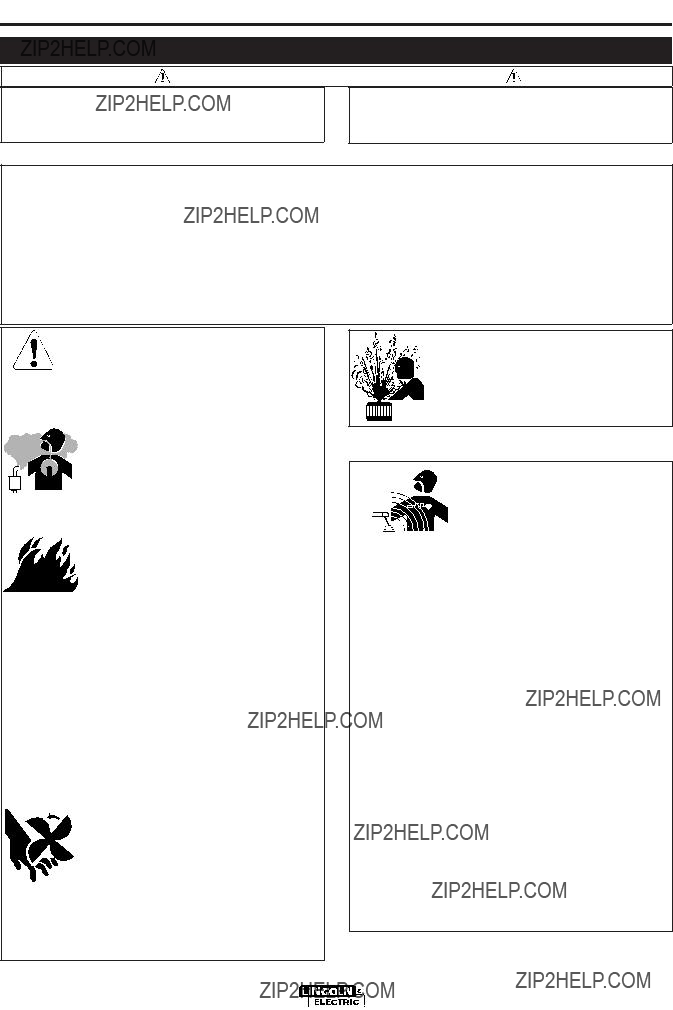
 WARNING
WARNING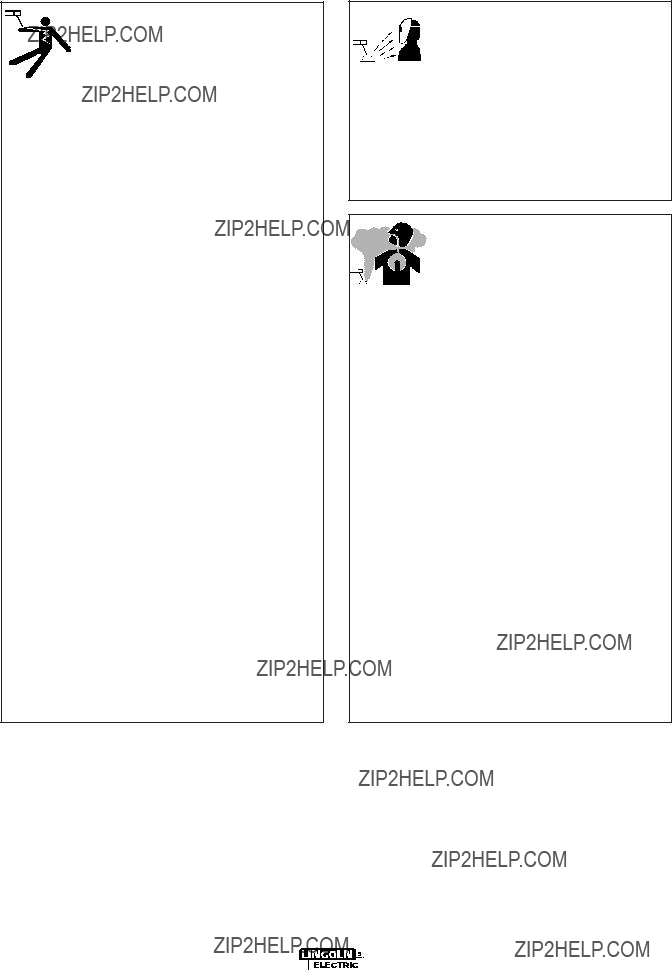


 WELDING SPARKS can
WELDING SPARKS can 
 cause fire or explosion.
cause fire or explosion.

 CYLINDER may explode
CYLINDER may explode 




 if damaged.
if damaged.

 WARNING
WARNING CAUTION
CAUTION
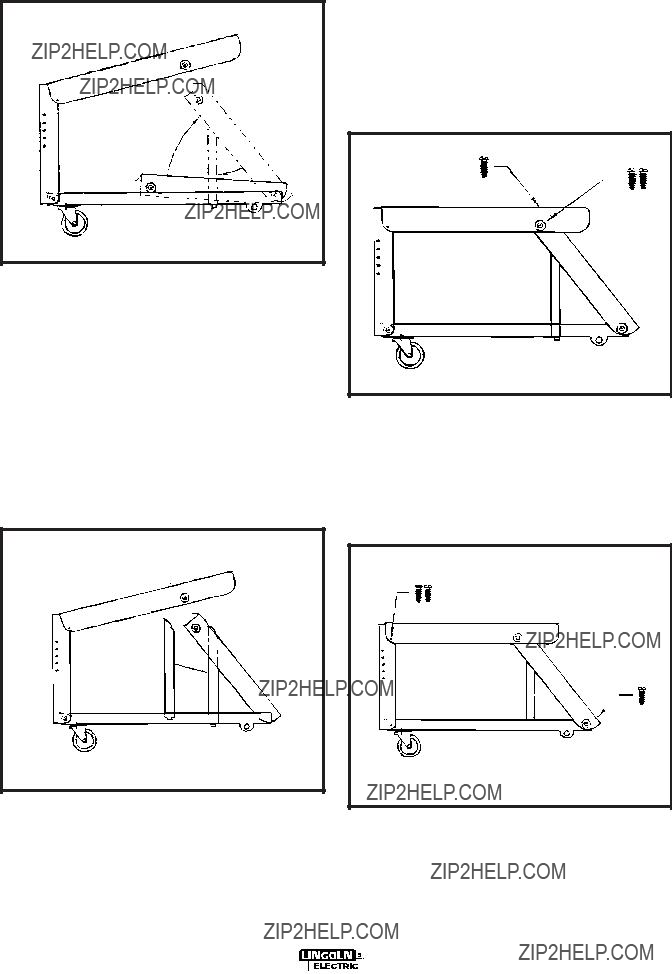

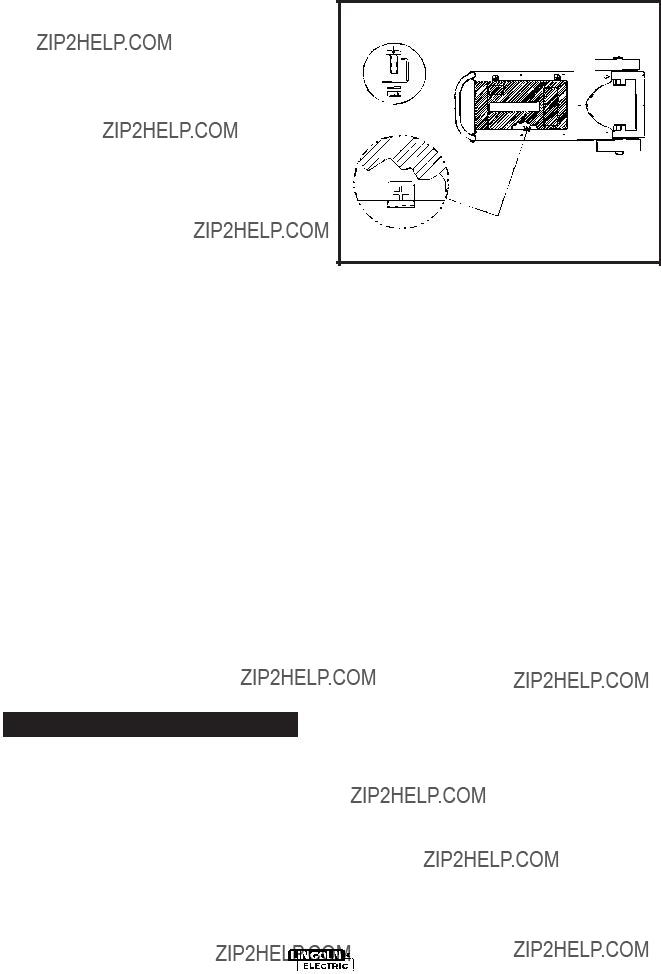
 CAUTION
CAUTION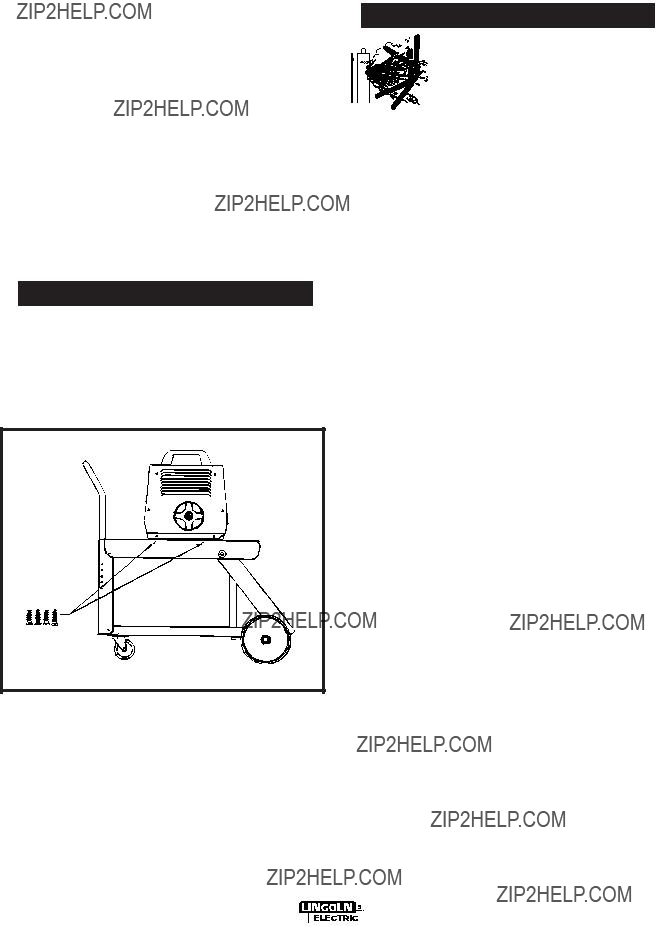
 CAUTION
CAUTION WARNING
WARNING

 CYLINDER could explode
CYLINDER could explode 




 if damaged.
if damaged.



